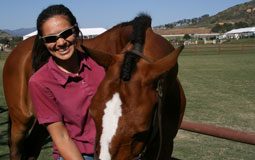
Laminitis is inflammation of the structures that connect the coffin bone to the hoof wall, which are called laminae. The term is often used interchangeably with “founder,” although founder is typically reserved for more severe clinical signs that occur as a result of advanced cases of laminitis. As the inflammation progresses, the coffin bone can actually detach from the hoof wall. The bone can sink or rotate, which is a serious and painful condition that requires a long recovery, if not euthanasia.
The symptoms of laminitis are most often a reluctance to move, a stretched-out stance as the horse tries to take weight off his front feet (front hooves are more often affected), unusual heat in the hooves, and a strong digital pulse. Some of these symptoms are similar to other causes of lameness, which is where the discrepancy between owner-reported and veterinarian-confirmed cases comes in.
In this study, researchers looked at data from 93 cases of laminitis that had been confirmed by veterinarians. In 51 of the cases, the owners had suspected laminitis, and all of those cases were confirmed. In the remaining 42 cases, the owners had reported the condition as other causes, most often general lameness or stiffness, colic, or hoof abscesses.
Owners were more likely to report increased hoof temperature as a symptom leading them to their assumption of laminitis. Veterinarians were more likely to cite difficulty turning, shifting weight, and body condition as symptoms of laminitis.
The data suggests that owners can be a valuable source of information about laminitis cases. All of the cases where owners suspected laminitis were confirmed by vets. However, it appears that owners may underreport the problem as the symptoms appear very similar to other conditions. The researchers conclude that this highlights the need for more education of horse owners to ensure that they recognize early signs of the disease.
Pollard, D., Wylie, C. E., Verheyen, K. L. P. and Newton, J. R., Assessment of horse owners’ ability to recognise equine laminitis: a cross-sectional study of 93 veterinary diagnosed cases in Great Britain. Equine Vet J. Accepted Author Manuscript. doi:10.1111/evj.12704
Leslie Potter is a writer and photographer based in Lexington, Kentucky. www.lesliepotterphoto.com






What would lead to something like this?